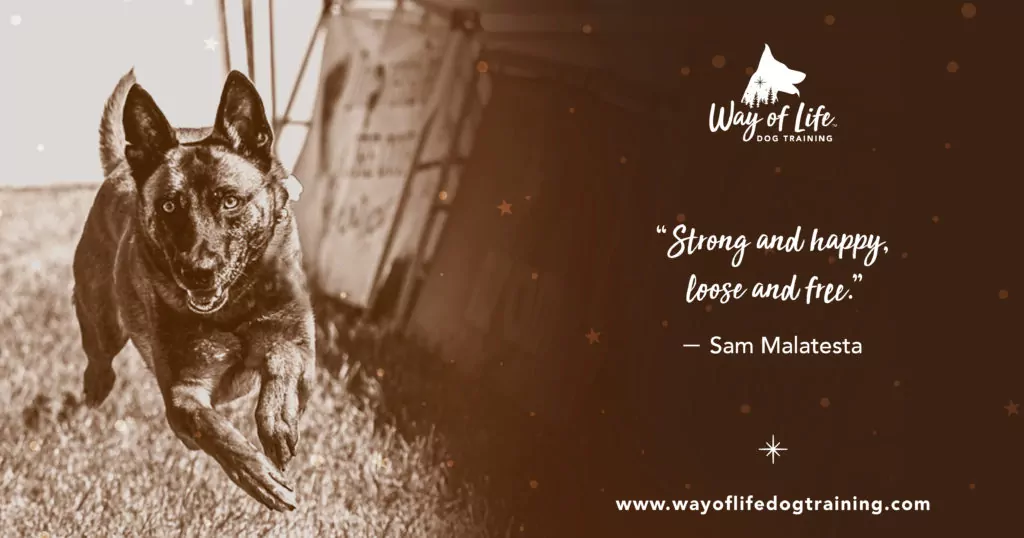
In the last issue, I discussed the stage-by-stage thinking so central to the Way of Life method. Like anything else in a dog’s way of life, the granting of freedom is done in stages. Yet too often, in the name of compassion towards our dog and ethical and humane treatment, we give our dogs freedom prematurely, out of sync with the stage of our rearing and relationship, only to end up with behavior issues.
Those who coach with me or know me personally see that I rarely have leashes on my dogs. Each one of my four dogs is what I consider an integrated dog – a mature dog capable of agency and choice, a dog deserving of freedom. This even includes my dog Bob, my senior Formosan who continues to challenge me around other dogs sometimes. While he remains suspicious of dogs at a distance and certainly doesn’t appreciate human or canine intrusions into his space, I can still cut him loose because he ignores things, pays attention to me, and has enough mind and maturity to avoid confrontations.
Many people see these dogs, are deeply impressed with them and their demeanors, and mostly how easy they make it look to have a loose dog around. But in many cases, people are not willing to do the work, the logistical and psychological effort, of preparing dogs for that freedom.
What does that preparation involve? It involves starting from a place of minimal freedom. It means starting from a place of structure and control, of law and order. At Stage 1/Foundations, we relate to our dog as a “child” or “juvenile” and normally, we don’t give children much freedom at all and that’s regardless of species.
It can feel strange to have a leash on the dog at all times, even indoors. It can be difficult restricting dogs to crates and exercise pens, to separate them behind baby gates or in outdoor kennels for some of the time. And yet, this is what allows dogs a gradual integration into the home and incremental practice of freedom. When we don’t take the time to create that foundation, at the very least, we’re looking at a lifetime of being unsure of whether we can trust our dog.
As we mature that juvenile and move into Stage 2, a stage of adolescence, education, and exposure, we begin our off-leash work. But now, we’re armed with relationship foundations whereby the dog WANTS to be with us because we’ve made things so safe and successful at Stage 1. To borrow on language from attachment theory, we would have become a safe base for our dogs to go out into the world and a safe refuge to return to. This is what it means for a dog to be truly free.